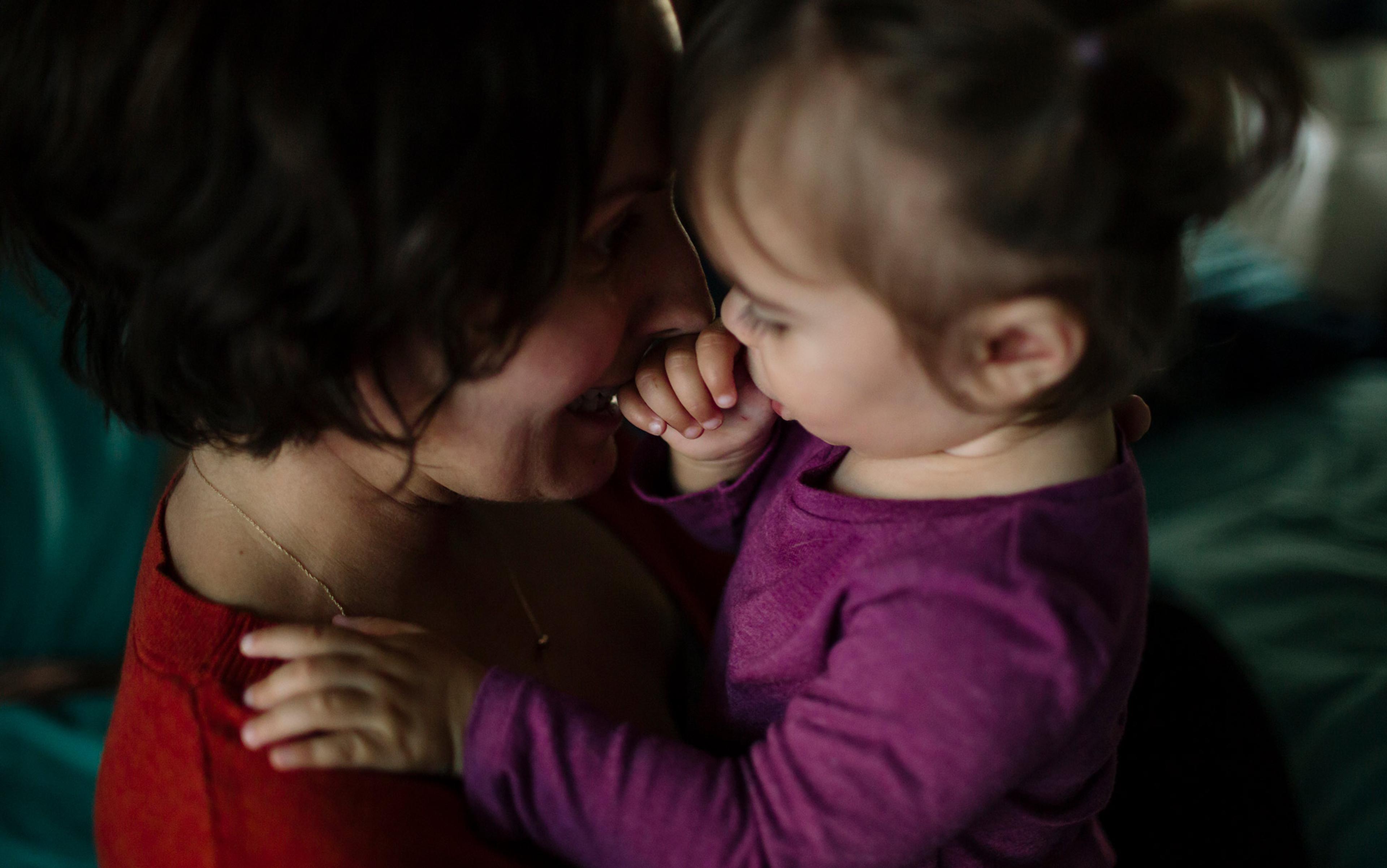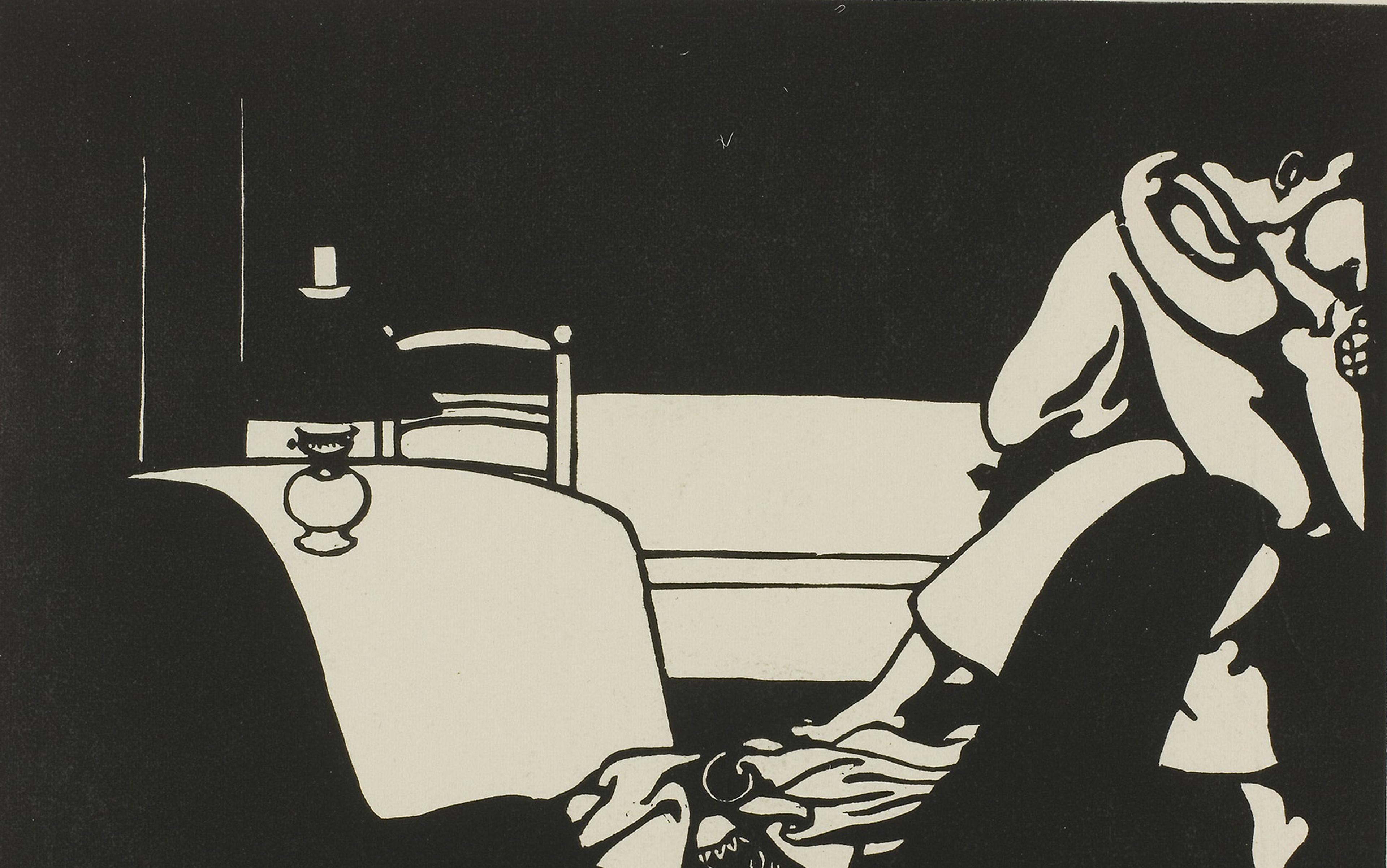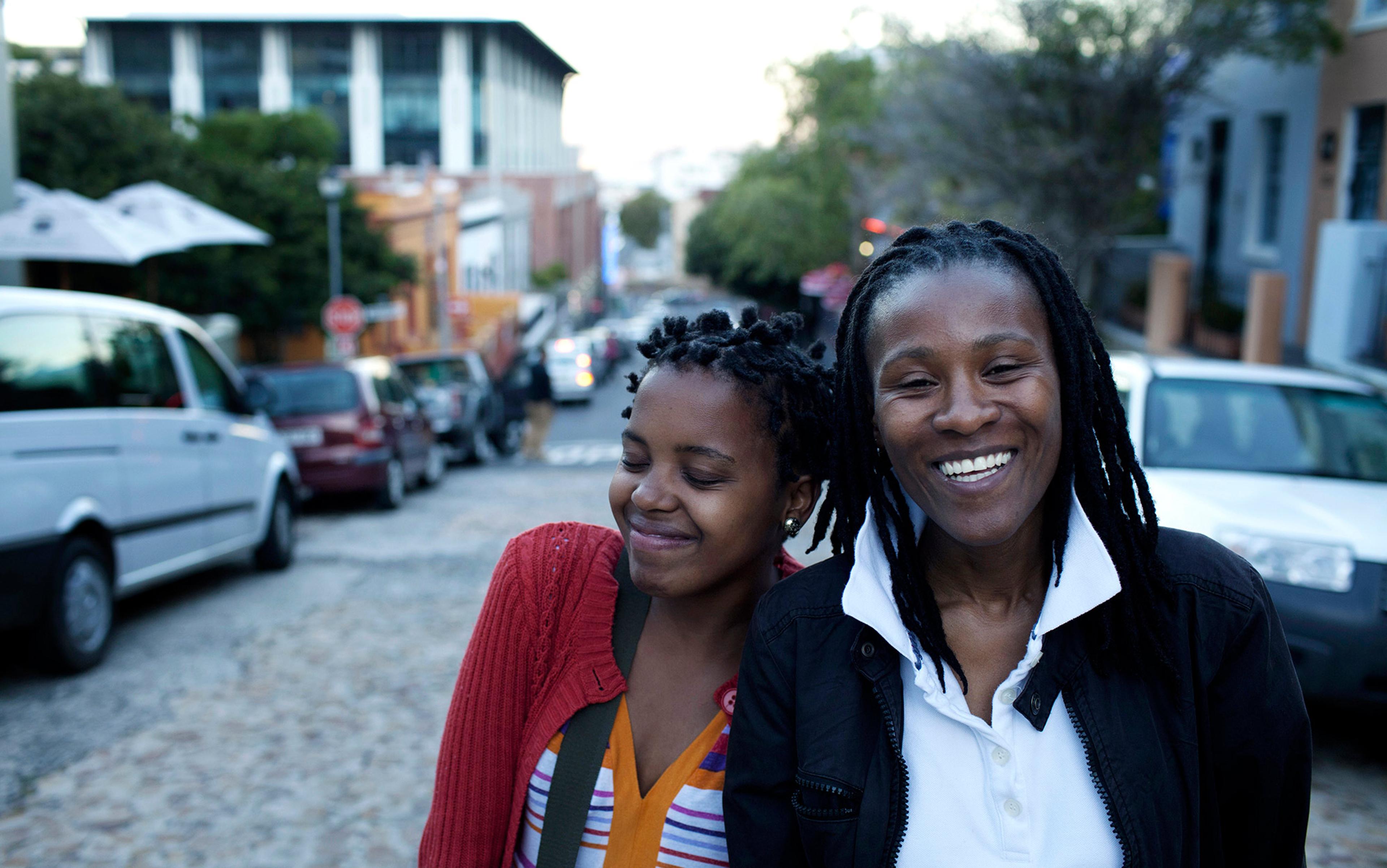Romantic love – seeking it, glorifying it, dishing it – is a human obsession. My English barmaid mother called it a ‘funny five minutes’ never to be trusted and basically dangerous for women. The feminist author Marilyn Yalom saw a mysterious but ‘intoxicating mixture of sex and sentiment’. Until the turn of the century, one definition seemed to be as good as any another. This despite the fact that, in the past 50 years, love has become the basis for long-term adult commitment, which is now an emotional rather than an economic enterprise. (Most women today put a man’s ability to explore his feelings ahead of his ability to ‘provide’.) The basic building block of family stability – love – is recognised as a source of happiness and life satisfaction, a key to physical health and resilience, and a primary life goal. This mystery you fall into is critical but all too often fleeting: popular consensus holds love as a sexual force with a best-before date.
For someone like me, who practised the most difficult kind of psychotherapy with distressed couples seeking to mend their relationship, all this was problematic. As a young doctoral student trying to be helpful in the face of all shapes and sizes of relationship distress, the one thing that rapidly became clear was that no one, no poet, philosopher or psychologist, had cracked the code of the drama that played out in my office every day, leaving me as overwhelmed and distressed as my clients.
Then, in the early 1980s on the west coast of Canada, armed with positive communication exercises and insights into how a partner might project his or her past issues with parents onto a partner, I eagerly welcomed a couple into my office. It didn’t go well. Amy exploded in frustration, yelling at Tim and detailing all the times he had let her down and dashed her hopes. ‘I would be better off if I’d never met you!’ she screamed.
‘No one can live with someone as judgmental as you are,’ Tim responded. ‘So I just stop trying – I just go to my silent cave and wait till you wind down.’
Amy shot back: ‘What is winding down is this damned relationship.’ This battle continued unabated for another 40 minutes. I could not get a word in, and quickly lost any sense that I could impact this toxic battle, let alone help Amy and Tim build any kind of lasting truce.
Amy made it clear that I was a complete disappointment as a therapist, and I realised with cold certainty that none of the techniques in my textbooks worked. I had to find my own solution, or just give up seeing couples completely.
So I began videotaping my couples, watching tapes again and again until I was able to identify patterns in my clients’ misery and cobble together ways to change those patterns. Gradually, I found, to my amazement, that I could not only reduce the fights in my office, but move my couples into more loving, secure conversations. The one rule of couple therapy was to avoid the partners’ most upsetting emotions. However, I counterintuitively found that by plunging into that difficult territory, I was increasingly able to guide my couples into new emotions and different ways of speaking to each other. When the emotional music changed, the partners in my practice learned to dance differently, in a way that brought them together.
I called this way of working ‘emotionally focused couple therapy’ (EFT), and tried to write it up and test its effectiveness for my doctoral thesis in counselling psychology. This was wildly ambitious, and a little delusional, given that in the early 1980s everyone knew couple therapy was impossibly hard, with study results small and fleeting.
Yet, after months of teaching colleagues to do EFT with distressed couples and crunching data, I found that partners could not only touch and talk about their deeper feelings with each other, but the majority of them reported that their hurts were healed – the rifts in their relationship repaired. This study persuaded the University of Ottawa, in Canada’s capital, to offer me a junior professorship in clinical psychology. It seemed that I had found some kind of way through the drama of romantic love, but there was still something missing. I didn’t know why EFT worked so well and how it fit into the puzzle that was love relationships.
This all changed when I attended a conference high in the Rocky Mountains to present my research, and heard a renowned speaker describing love as a deal, a kind of economic contract. As with any business deal, he said, teaching negotiation skills was one way to help couples connect. As I listened, I remembered the research by the English psychologist John Bowlby, who studied the bond between mother and child in the 1950s and ’60. Suddenly everything fell into place, and I understood that romantic love was also an attachment bond. It was an ancient, wired-in survival code, not just a mix of sex and sentiment. The longing for safe emotional connection with a key other was wired into our nervous system, and the drama of love was all about negotiating emotional connection to a loved one whom you could depend on – who would come when you called. Loss of this connection and the descent into emotional isolation was intolerable and terrifying for human beings.
I suddenly understood what EFT had been doing right. By teaching my couples specific kinds of bonding conversations, where lovers could share vulnerabilities and respond to needs for connection, relationships were changed. Love had a logic and was something we could intentionally shape.
Today, EFT is the gold standard for couple therapy based on the science of bonding applied across the board. In the 12th session of couple therapy, Blair (who reminds me of my old client Tim) can tell his wife, Susan:
I do shut you out, but not because I don’t care or you are not important to me. I turn away because I cannot bear to hear how I have failed you. I get overwhelmed when I hear that you are disappointed in me. But I want to be close – I want to learn to love you. I just get so scared. I need your reassurance. I want you to tell me about your hurts, not what a lousy husband I am. Then I can learn how to be with you – cause I love you.
Susan weeps and is able to respond to his plea for connection. The dialogue that we call a ‘Hold Me Tight’ conversation is up and running, and I know that this couple is not just repairing the rift in their relationship but shaping a secure, loving bond. This kind of bond does not just heal relationships but creates a connection that heals them as individuals and helps them grow stronger.
EFT now has more than 20 positive outcome studies, nine studies of exactly how change occurs, and four follow-up studies showing that changes made in eight to 20 sessions of therapy last and even increase over a three-year period. We have a brain-scan study showing how bonding conversations impact how clients’ brains respond to threat, and a study showing that EFT not only impacts factors such as relationship distress, intimacy, trust and the forgiveness of injuries, but also an individual partner’s attachment style – that is, their orientation to and sense of safety and engagement in close relationships.
We use EFT with many different kinds of couples: for example, couples where one or both partners struggle with depression or post-traumatic stress disorder (PTSD), as well as hetero and LGBTQ couples. Thousands of therapists from all over the world receive training in this model. It has taken more than 4,000 years, starting from the first love letter – carved in stone for a Sumerian king in the 8th century BCE – to crack the code of love. But now this science is exact enough to help us fix, grow and hold on to our most precious relationships.
And this science suggests that it is time to change our love stories. They are mostly ridiculous and misleading. Romeo and Juliet is not a love story. It is a six-day relationship between adolescents and an infatuation that leads to a tribal war. Gone with the Wind is not a love story. It is a tale about a woman who cannot make up her mind in the game of love, and by the time she does her lover has gotten bored and buzzed off.
Real love stories reflect the wisdom of attachment science, which states that love is an ancient survival code designed to keep a few precious others that we can count on close. We are wired by millions of years of evolution for this kind of connection, and it is as essential to us as our next breath. Emotional connection with a safe loved other soothes our nervous system; it whispers ‘safety’ to our bonding brain. On the other hand, a sense of isolation, not mattering to others and being rejected, is a real and present threat for a bonding mammal. Our young are so vulnerable for so long and, indeed, as our brain is developing, the reality is that if we call and no one comes, we die. So, it makes sense that rejection is coded in the same part of the brain and in the same way as physical pain. Stepping on a nail and suddenly feeling rejected are both danger cues.
The idea that we are better together, sharing the load, is a physiological fact, not a sentimental statement
What exactly does attachment science tell us? Thousands of studies of mother-infant bonds have revolutionised parenting in the Western world, creating a new normal for how we treat our children. It was not so long ago that psychologists such as the American behaviourist John Watson labelled mother love as toxic, and advocated as little contact as possible so as to build independence in the child. Indeed, the pathologisation of dependency in adults, captured in overused labels such as co-dependency and enmeshment, continues to this day.
The study of adult attachment, now with hundreds of studies to its name, has only really got going this century. Attachment is the most comprehensive, biologically based developmental theory of personality ever formulated, and the only such theory that integrates inner realities with relational dramas. It is also specific enough to be eminently practical in offering us a blueprint – a guide to what love is, how it goes wrong and how to repair it. This perspective identifies the core organising factors that make us human. In brief, we are first and foremost social-bonding mammals, and from the cradle to the grave the need for connection with others shapes our neural architecture, our responses to stress, our everyday emotional lives and the interpersonal dramas and dilemmas that are at the heart of those lives.
The wisdom of attachment science can be summarised in a few basic ideas, the most fundamental of which is that we are wired for close connection with others and this connection is vital to our survival. This connection is the ultimate resource for human beings. The brain takes the resource called proximity to others into account even in basic perception processes such as the visual perception of height. If we are alone, we actually see a hill as higher. If we are accompanied by another, we perceive a hill as lower. The idea that we are better together, sharing the load and the stress, is a physiological fact rather than a sentimental statement. Threat, risk, pain or uncertainty particularly prime this need for connection, and a sense of aloneness is a risk factor for every form of mental dysfunction identified by psychologists. The longing for connection is primary in terms of the hierarchy of human goals and needs. Isolation or loss of attachment figures is inherently traumatising for human beings.
Predictable physical or emotional connection with a close other calms our nervous system and shapes a sense of safe haven where comfort and reassurance can be readily obtained, and emotional balance can be restored and enhanced. This balance gives us choice. Once in balance, we can choose to move in any direction; without it, we fall haphazardly. This balance promotes the development of a grounded, whole sense of self; a self that can organise the chaos of experience into a coherent whole. The self is a process that is always constructed with others; according to this perspective, you cannot be a self all by yourself.
Being able to depend on a loved one also offers us a secure base, a platform from which to risk and explore our world. Effective dependency is a source of resilience, while the denial of attachment needs and pseudo-self-sufficiency are liabilities. It is the child who knows the mother is watching and will come if needed who takes the risk to go down the steep slide, and the adult under pressure who can call up the encouraging voice of his partner who deals best with stress. Securely connected folks recover from trauma more effectively and are less likely to develop PTSD. Generally, the more connected we feel, the more confident and autonomous we can be. Secure connection grows us and makes us strong.
The key factors that define the quality of any bond are the perceived accessibility, responsiveness and emotional engagement with an attachment figure. These translate neatly into the acronym ARE, capturing the key question that arises in conflict with close others: ‘Are you there for me?’
Often masked by more surface power struggles over issues such as parenting or chores, this question is at the heart of all relationship distress. When the answer to the above question is a ‘maybe’ or a ‘no’, a natural process of separation distress occurs, and we protest the loss of connection with anguished angry calls and demands (often misinterpreted in adult relationships). We cling and seek connection, and finally move into depression and a sense of helplessness.
Key dramas with others become mental models that we use to guide perception and behaviour in the future. At best, these models are flexible and can be revised in new situations; but they can also become part of self-fulfilling attitudes that perpetuate the past.
In therapy, James tells me: ‘I expect people to let me down so I am very vigilant for any slights, and don’t trust even so-called “loving” behaviour. People are just selfish at heart.’
Sadly, by the way he relates to others, he always proves the truth of this remark.
The ways we have of dealing with our emotional needs – our dance moves with others – are not infinite. Indeed, science has identified only four attachment styles.
We can think about these styles in terms of the scripts we habitually use to deal with our emotions and engage with others. Experiencing others as predictably responsive and present enables us to develop a secure attachment style in which we reach out when we feel vulnerable or in need of comfort. This is the style that helps us grow, learn from new experience, and deal best with life’s challenges.
There are also three more limiting, insecure styles of attachment.
The first type of insecure attachment is avoidant. When we mostly experience others as distant, dismissing and even dangerous, we shut down our emotions and distance ourselves. So, when vulnerable, we detach and shut down, shutting out our loved ones.
The second type of insecure attachment is anxious and preoccupied. Here, we have learned that others are not predictably responsive, and we become fixated on obtaining signs of reassurance that we will not be rejected and abandoned. We then tend to express lots of negative emotions and push and demand love, often inadvertently alienating our loved ones.
Finally, if we have been abused or traumatised, we get caught in chaotic emotions with intense longings and fears, and we tend to flip between anxious and avoidant styles; we are fearful and avoidant, first needing intense connection and demanding closeness, and then distancing and rejecting it. Here, others are the source of fear and the solution to fear, creating an impossible, paradoxical situation.
All these styles and strategies can be functional and useful at times, but if insecure styles become rigid they tend to narrow down our awareness and ways of dealing with our emotions as well as connecting with others, and so become self-perpetuating.
He pauses, then shouts: ‘Yes, but will you make love to me tomorrow?’ She looks out the window
Andy tells me all the reasons he is just fine. He is a good lawyer, a great athlete, but he is ‘agitated’ all the time. He tells his partner of 25 years, Sarah: ‘If you loved me, you would make love to me every day, twice a day.’
She reminds him that they went away for the weekend and made love twice and it was great. He pauses for a moment and shouts: ‘Yes, but will you make love to me tomorrow?’ She turns away and looks out the window. I think you can tell immediately what Andy’s style and main strategy is.
When we understand our emotions and the dance we do with others, we have more choices. When Andy can touch and express his fears that he is flawed and not good enough for Sarah, he triggers her caring and reassurance. Having sex, which is the only time he feels sure she belongs to him, then becomes less front-and-centre.
Attachment is, of course, different in adults than in children. In adulthood, bonds are more reciprocal, and adults are more able to create symbolic proximity with others by holding them in mind. Immigrating to North America alone at a tender age felt to me like stepping off the edge of the world. My main source of strength was my father’s voice in my head telling me how strong I was and that, if everything went wrong, he would find a way to bring me home.
Adult attachment is also sexual, and sex is a bonding activity. It is no accident that we are flooded with oxytocin, a bonding hormone, at sexual moments. Attachment helps us understand that, as recent sex research suggests, the sex drive is as much about the desire to be desired and to be close as it is about sexual release, for men and women alike. Being ARE – accessible, responsive and engaged – is the best recipe for great sex, but this is more difficult when insecure strategies intrude. Avoidant partners tend to focus on sensation and performance rather than attuning to and connecting with their partners, and report that sex is less satisfying for them.
‘I don’t even know how we got here. I love her. I don’t understand why we are in this mess’
Understanding our own attachment style and the dance of connectivity is the hallmark of EFT therapy, providing a roadmap for relationship repair and growth. Instead of teaching couples set communication skills, we help them tune into the circular dance they are caught in, and grasp what it is all about. The more Andy pushes and criticises, the more rejected Sarah feels, and the more she withdraws.
As she withdraws, all his worst fears are confirmed and he becomes more desperate and demanding. Both are alone and overwhelmed, and I believe Andy when he says: ‘I don’t even know how we got here. I love her. I don’t understand why we are in this mess.’
So in the first stage of EFT – de-escalation – Andy and Sarah reduce the intensity of their dance, and move from blaming and withdrawal to understanding how they impact each other, and how desperate attempts to manage feelings of abandonment and rejection have now become the problem. Sarah is able to tell Andy:
I do turn off. It seems that I can never please you. I just don’t seem to be the wife you want and that terrifies me. So I give up. Hide. I don’t know what else to do.
After six sessions, the music has changed from attack and defend to Andy saying:
We really get stuck in this thing. We call it the spiral. I watch for any sign that she doesn’t need me, and then I do this push thing, and she just hears me accusing her. I told her last night: ‘Heh, we are in the spiral, so must be that we are both feeling alone. Let’s stop,’ and she gave me a hug, and somehow we shifted gears.
This couple begins to see the pain and longing underneath the negative responses that characterise their dance of distress.
Once the couple have been able to come together against this dance of disconnection, then we can begin – in Stage 2 of EFT, restructuring attachment – to move them into creating positive cycles of accessibility and responsiveness. The therapist gradually helps a couple such as Andy and Sarah move into a hold-me-tight bonding conversation. Success in this dialogue predicts relationship repair and improved satisfaction at the end of EFT sessions and at follow-up. It also predicts that partners can move into a more secure attachment style. Both can get their need for a sense of a safe haven with another met, sometimes for the first time in their lives.
The third stage of EFT, consolidation, is short. Here, we help the couple write a new, positive love story about how they have healed their bond and found the connection they have always longed for.
EFT as an attachment intervention teaches us to slow down and pay attention to the ever-present unfolding drama in our relationships – a kind of relational mindfulness if you like. It also teaches us to tune into our emotions and trust the information they offer. In EFT, we help couples pinpoint triggers, body sensations and meaning-making processes – the direction the emotion moves us in. Research tells us that people with the most emotional balance can make their emotions ‘granular’, that is specific and concrete. This in itself makes emotions more manageable. Andy is calmer and more in control when he can tell Sarah:
I see your face go still and then my stomach churns. My brain says: ‘She doesn’t want you – you’re not good enough’ and then I panic and I push. I try to control you – make you respond. Anything to not feel so afraid and lost. Right! I guess, bottom line is that I am always afraid with you, you matter so much.
Attachment teaches us that we have to be willing to feel and to risk telling our partner in clear terms about our most vulnerable places, our fears and needs, and this is what happens in a hold-me-tight conversation. And then we have to be willing to hang in and talk through how we and the other hears this kind of revelation.
Sarah does not say to Andy after his first dive into softer feelings: ‘Oh, that is why you are so pushy. Come and have a hug, sweetie.’ She needs time to let his message penetrate. He needs to do this a number of times. Safety grows and later, after she is able to open up and share the fear of his criticism and doubts about her own worth that cue her stonewalling of him, he can begin his part of a hold-me-tight conversation. He tells her:
I never understood why you married me. You are so beautiful. My Dad always reminded me that I was the family runt, small and pathetic. I am so scared of you discovering your mistake. The fear overwhelms me, and I end up pushing and then pushing you away. I need your touch, your reassurance that it is me you want. It’s not really sex; it’s that, in bed, for just a moment, I feel like you give yourself to me. That I belong. So I am asking. Can you hear me?
Sarah reaches out with her hand.
The attachment perspective tells us who we are and what we need to thrive
As a couple slows down their negative interactions, they are able to see their whole dance from a meta-perspective. Then they can reach for their vulnerabilities, own them and express the needs inherent in them, responding to each other with compassion. When this happens, the relationship and their sense of self opens up and grows.
What does all this mean for science and society?
It means that we can have a science of close relationships that enables us to shape them. This is the key, not just to more harmonious connections, but to more stable families and more emotionally resilient children. On a broader level, the attachment perspective tells us who we are and what we need to thrive. It offers a corrective to the impersonal, isolated culture we seem to be creating. Even our invulnerable superheroes, the epitome of self-sufficiency and individualism, now seem to be getting together in teams and calling to each other for support. More specifically, science offers an answer to the young people who come up to me at conferences and tell me that they are confused and desperate; that they hear that monogamy is unnatural and impossible, that secure bonds just lead to sexual deprivation, and that the romantic ideal of lasting love is only for the immature and delusional.
We are a curious species and we always need to experiment and explore, but let us, especially at this moment when we have cracked the code of love, not lose our way. Science and practice with couples and families over the past 30 years tells us clearly that love makes sense. For the first time in human history, we can grasp love and shape it, so that we can, if we chose, fall in love again and again with a partner over a lifetime.
We are making progress.
When I asked my family how to choose a mate, I was told by my pragmatic relatives: ‘Just make sure he has a suit.’ My daughter and I have a running joke about a mythical guy called Sid. I say: ‘Don’t worry about how difficult dating online is, Sid will show up one day.’ She says: ‘He’s late. And how will I recognise him anyway?’ I look at her and raise one eyebrow. ‘Okay, okay,’ she says, reciting the research: emotional responsiveness is the main thing that predicts happiness years into a relationship. So it’s all about: ‘Does he show up emotionally? Is he open and accessible, responsive and engaged? Do I feel safe and whole with him? I know, I know.’ And she does.






